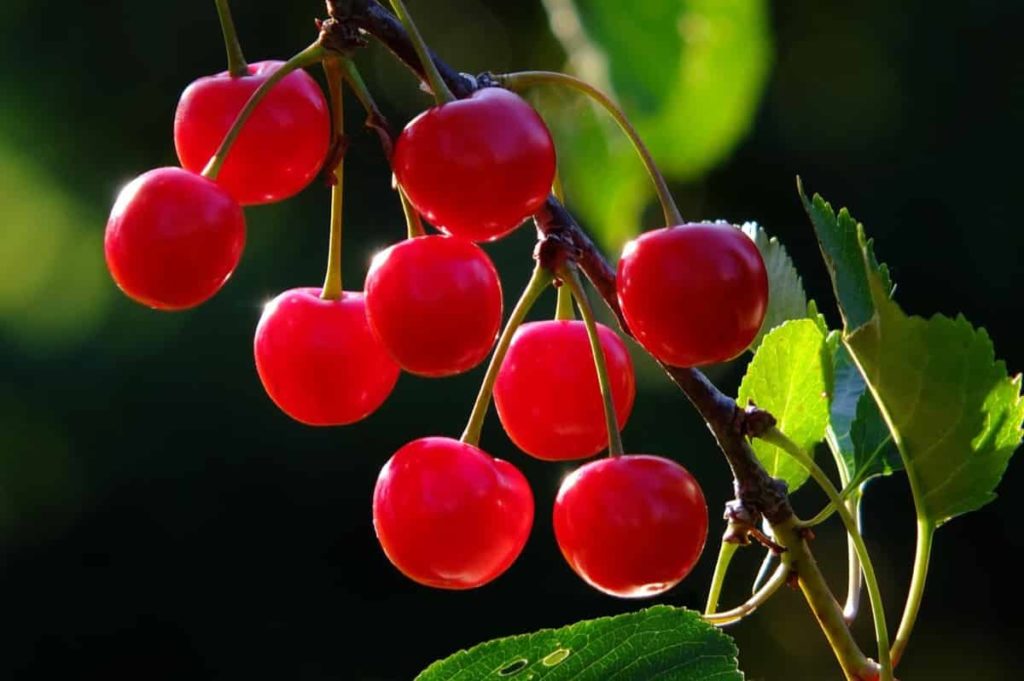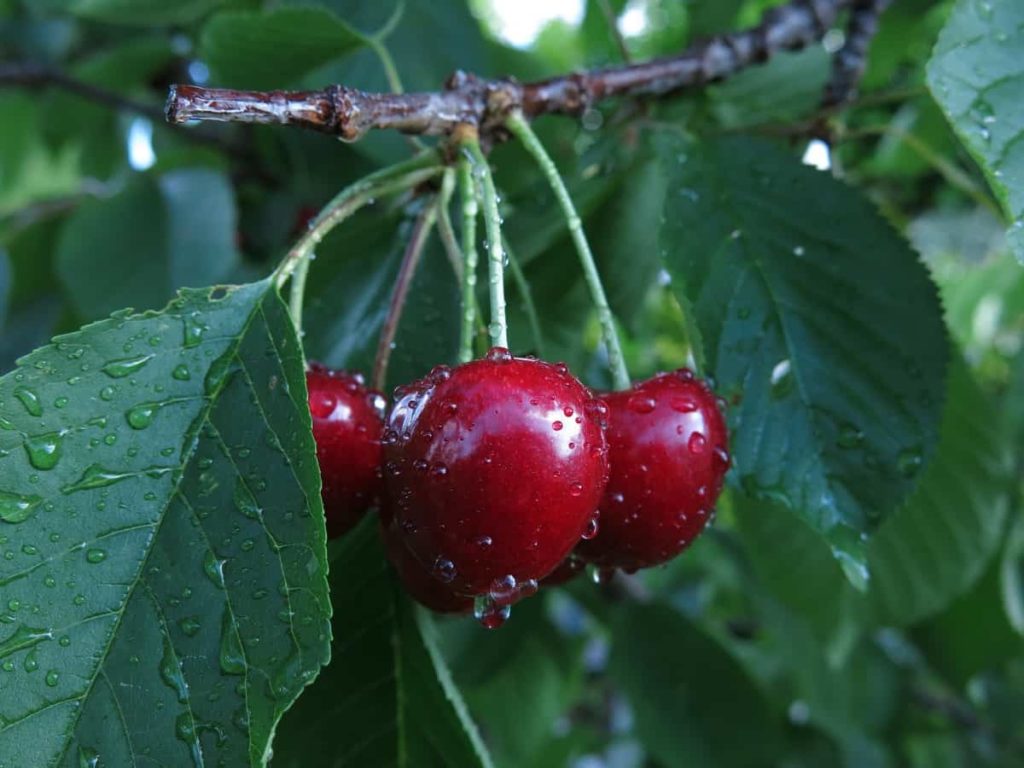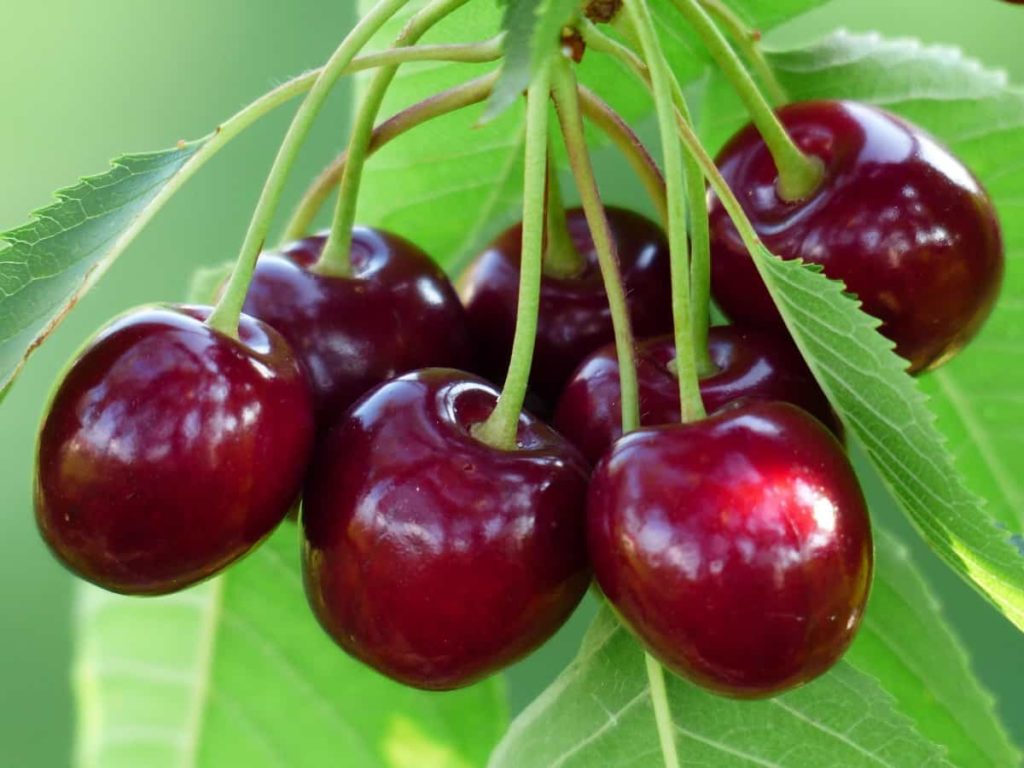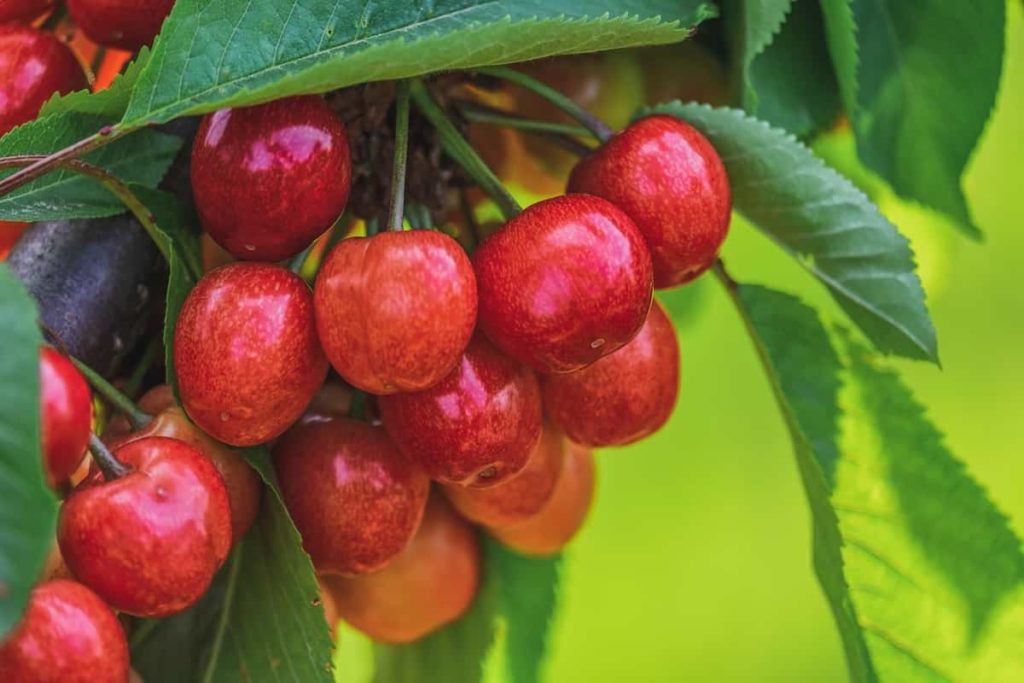Growing a Cherry tree is as beneficial, but it has problems. The larger the tree, the more it becomes prone to various bacterial diseases, fungal infections, and general malaise. Symptoms of the disease can be terrible. These pathogens can damage a garden of Cherry trees and halt any charming blossoms or juicy fruit.

However, when Cherry tree farmers implement the proper safety measures, they reduce the sensitivity of their tree infection and increase the chances of a vigorous blooming and delicious harvest.
Common Cherry tree problems
Cherry trees are not flowering
The Cherry tree may not mature yet
The age the Cherry tree needs depends on whether you are dealing with sour Cherry trees or sweet Cherry trees. The sweet Cherry trees will start bearing fruit between four and seven years old, while the sour Cherry trees will take fruit after they are between three and five years old.
Solution – Depending on the tree’s health, your Cherry tree can start producing fruit during earlier estimates.
Weather and climate problems
The most common reason Cherry trees do not flower properly is weather related. Both climate and weather will play an essential role in how well your Cherry trees work. If you plant Cherry trees in a climate unsuitable for them, you will likely not get excellent results. It can also sometimes be the case that you’ll have a strange year with the weather, and it can do it, so your Cherry tree doesn’t flower as they usually do. Frost will be the biggest concern keeping your Cherry tree from flourishing.
Solution – To prevent this from happening, you can cover Cherry trees whenever you know it’s cold at night. You can protect Cherry trees from frost damage by planning, and this should keep the trees safe enough so that when they are flowers and fruits. Planting your Cherry trees in a safe space in your courtyard would also be a wise idea. Try to put them in a position unlikely to face significant frost problems.
Ideally, you should water Cherry trees on a permanent schedule. However, you will need to adjust things based on how much rain has fallen and whether you are in drought time or not. Cherry trees can die when they don’t get enough water, but they can die when they get too much water. This means you can’t go overdone with water; otherwise, you will risk the tree’s health.
Cherry trees get yellow leaves
The Cherry tree leaves are usually yellow and drop in fall and winter when the tree enters into dormancy. However, if its leaves turn yellow in spring or summer, the tree faces more water, extreme heat, inappropriate nutrients, lack of sunlight, or disease.
Overwatering
The common reason for the yellow leaves of Cherry trees is the stress from more water. It is particularly common in poor drainage soils. By watering the soil up to 2 feet, you are providing 90% of the roots of the Cherry tree. Also, only when the soil is dry from the water are you both preventing less water and more water. This helps the plant to establish water freedom.
Solution – You can provide a few inches of mulch to help with this process, but avoid excessive mulching it can further lock moisture in poorly drained soil. On the other hand, pot Cherry trees with poor drainage can be modified quite quickly by repotting them with fresh potting soil.
Inappropriate nutrients
The over-fertilizing of Cherry trees usually causes additional nutrients. This can chemically burn the roots of the Cherry tree, causing the tree to become stressed and produce yellow leaves. Generally, fast-running fertilizers cause over-fertilization because fertilizer is not powerful enough. The lack of nutrients also causes stress for the tree, producing yellow leaves. Inadequate nutrients are usually caused by poor soil, lynching, and other stress.
Solution – Nutrient leaching occurs when soil is too drained, or over water and nutrients seep far below the reach of the tree roots into the soil. Compost provides enough nutrients, increases water retention, and promotes healthy soils.
In case you missed it: Best Fertilizer for Cherry Trees: Homemade, Organic, Compost, Liquid, Natural, NPK, Requirements, When and How to Apply

Soil pH
In addition to nutrients, keep in mind that Cherry trees require a balanced soil pH between 6.0 and 7.0.
Solution – If you find out that the soil of your Cherry tree is very alkaline (above 7.0), you can add acidic modifications such as coffee ground, sand, and peat moss. On the other hand, if the soil of your Cherry tree is too acidic (below 6.0), add alkaline materials like wood ash, charcoal, or lime. Furthermore, cold or wet soil is not good at promoting the use of nutrients as the Cherry tree will either be slightly inactive during the cold or under a lot of stress in wet soil.
Lack of sunlight
Cherry trees usually require at least 6 hours of sunlight to photosynthesize properly. Without it, their leaves turn yellow, and they cannot prepare the sugar for the plant. Over time this can leads to the declining health of the plant, which could potentially die.
Solution – Plant the Cherry tree on the south-facing wall to reflect more sunlight and heat on the tree. Prune some over-story trees blocking the Cherry tree canopy from the sun. You can also prune the Cherry tree so that more light can reach the mid and lower branches.
Diseases
There are plenty of reasons your Cherry tree leaves are yellow or brown. Most of these causes are related to fungal infections that could kill Cherry trees.
Solution – If you wish your Cherry trees to thrive, you must take fungal infection risk very seriously. Prevention is primarily about ensuring you take maximum care of the Cherry tree, but sometimes it may be wise to use fungicides on Cherry trees to stay safe.
Curled leaves on Cherry trees
Cherry trees get curly leaves from more or less water, a lack of nutrients, and aphids.
Underwater
When Cherry trees are given less water, their leaves start to curl to the conserved moisture. The leaves will dry, brown, and fall if left for too long.
Solution – To avoid this, only water when the top 2 to 4 inches of soil is dry.
Extreme heat
Extreme heat also affects the Cherry leaves.
Solution – To help prevent curling leaves, avoid exposing your Cherry trees to temperatures above 32°C. Since Cherry trees are natively from temperate climates, they cannot withstand as much heat as tropical plants such as citrus trees. Moreover, Cherry trees need proper water to help keep themselves cool. Cherry trees cool themselves by sending moisture from their roots to their leaves and through an action called transpiration.
Inappropriate nutrients
Cherry trees that are high or under fertilized become stressed, causing curling and browning leaves. Deficiency of nutrients leads to deficiency, while the nutrient strength from excess fertilizer causes the roots of the Cherry tree to burn.
Solution – For best results, use a standard low nitrogen fertilizer such as 5-10-10, or you can add 2 inches of compost every 1 to 2 months.
Aphids
The aphides are small pests that suck sap from under the leaves of the Cherry tree, causing the leaves to curl and fall.
Solution – You can eliminate the aphids by using a water hose, neem oil, or releasing ladybugs (a natural predator of aphids). Usually, a jet of water is enough to get rid of them.
In case you missed it: Cherry Growing Tips, Techniques, Ideas, and Secrets

Droopy Cherry leaves
The Cherry tree naturally droops leaves, but the more extreme droop can be due to underwater, overwater, heat stress, and transplant shock.
Underwater or heat stress
Solution – To prevent dropping or wilting, water the tree when the top 2-4 inches of soil is dry and grow in the proper climate. Watering when the soil is dry encourages the Cherry tree to grow deep roots to access deep water. Fertilizing and mulching, on the other hand, is just recommended process for any plant and climate.
Compost improves soil wealth and retains water, while mulching protects soil from elements and dramatically reduces vapor. Providing some shade to your Cherry tree If you live in a hot or dry climate. You can do this with shade sails, umbrellas, or other trees. Although Cherry trees don’t like to be as low water as most plants, they don’t like wet feet.
Overwater
Excessive water can often cause Cherry tree leaves to droop and wilt. The stress caused by excessive water inflow can also lead to conditions such as yellowing and shedding leaves.
Solution – To avoid more water, ensure the Cherry tree’s soil is well drained. You can improve drainage by modifying the soil. A good way to check whether the soil of the Cherry tree you plant is draining well is to dig a foot by 1-foot hole nearby and fill it with water. If the hole slows down by more than 2 inches per hour, it damages drainage.
Transplant shock
A transplant shock can occur when a plant is moved or replanted elsewhere. A transplant can cause extreme stress to the plant, especially if it has been handled broadly.
Solution – For best results, only plant transplants when needed and avoid damaging root ball. Water generously after transplant. If you’ve planted or moved your Cherry tree recently and noticed it starts with drooping or wilting of leaves, it’s likely a little stress from the transplant. After the transplant, the biggest energy focus for the plant is to establish a new root system. This can take up to a year for most plants to fully recover from transplants. Your Cherry tree should recover quite quickly from the transplant shock with proper care and conditions.
In case you missed it: Growing Cherry Tomatoes At Home – In India

Cherry drops problems
When the Cherry drop problem continues the problem can be related to poor pollination. Other causes include irregular water, poor soil, and diseases.
Solution – If your Cherry tree belongs to the non-productive type itself, you will need to plant another Cherry tree within a radius of 50 feet for cross-pollination. If you don’t have space for more than one Cherry tree place or means, plant self-fruitful trees. Other solutions are related to the growing conditions and maintenance you provide for the tree.
When the tree comes under stress from soil moisture or nutrient deficiency, it sheds undeveloped fruits to preserve its limited resources. So, make sure the tree is well irrigated and side-dress it with organic compost and aging manure.
Pests
Cherry slugs
Cherry slugs are small, green black larvae with heads larger than their bodies that grow to a length of about one centimeter.
Solution – If you look at the Cherry slug, the first step is to remove as many leaves as possible. Then, dust your tree with a powdery substance like chalk or wood ash to avoid being attacked again.
Spider mites
Spider mites are usually red, black, yellow, or white and can appear as suspicious small spots that look like peppercorns.
Solution – The best treatment for spider mites and outbreaks is introducing natural predators such as lacewing, thrips, and ladybugs. The mites will eliminate them but ensure that you follow the request instructions closely. Treating affected trees with insecticidal oil can also be an effective move.
Spotted wing drosophila
These small pests are about 3 millimeters long and have brown and red eyes. Their name is derived from the only dark spots on the sides of the male species.
Solution – To manage the drosophila attack, you can use organic pesticide sprays on your Cherry trees, provided you follow the request instructions carefully. Remove the affected fruits.
Leaf miner
Leaf miners are small, light brown moths with dark bands on their wings.
Solution – The most effective way to eliminate leaf miners is to introduce beneficial pests into the environment. Treat affected plants with pesticides where this is not possible. Give your treatment protocol time in early spring to ensure you target both mature leaf miners and their larvae.
In case you missed it: Growing Cherry Trees In Pots, Containers, Backyard

Black Cherry aphids
Black Cherry aphids, small, wingless, black pear-shaped insects, are commonly found in huddle groups on leaves.
Solution – Organic insecticidal soaps and horticultural oils can be effective for black Cherry aphids’ treatment. In light cases, you can clean the affected leaves of your Cherry tree with diluted dishwashing soap. Introducing beneficial pests like ladybugs will also get rid of aphids.
Japanese Beetles
These small brown beetles have metal green heads, bronze wings, and white hair patches around their abdomens. They are just over one centimeter tall and look bright in sunlight.
Solution – The effective way to get rid of beetles is to remove them from their Cherry tree by hand and drop them into soapy water containers. You can also spray your trees with neem oil, a chemical that prevents them from producing.
Diseases
Black knot
The black knot appears as hard, black swelling or knots, which can spread up to 1 to 6 inches on the tree. These knots appear in different areas around the tree and grow larger when the disease is not treated. Affected branches can wilt, grow leaves and eventually kill the entire tree.
Solution – Prune 3 to 4 inches below the knot during dormant weather. Sterilize all pruning equipment. Burn or bury all affected materials; otherwise, it may still be able to affect healthy trees. Remove Cherry trees that have severe infections.
Brown rot
The symptoms of brown rot are first as bloom browning, and twigs die. Leaves on infected twigs turn brown and fall but remain attached to the tree.
Solution – Once brown rot affects your Cherry, prune any affected parts of the tree with cleaned pruning tools 4 to 6 inches below the submerged dead tissue. Thinning your fruit trees encourages airflow, allowing dry environments to prevent fungi. Consider using fungicides if brown rot is invincible and continues to affect your trees.
Cherry leaf spot
The disease affects the leaves of Cherry trees and can appear on leaf petioles and fruit pedicels. Small purple spots are produced on the top of the leaf. These spots will expand to about 1/4 inches in diameter and turn reddish brown. Cherry leaves infected with Cherry leaf space may fall prematurely.
In case you missed it: Growing Cherry Tomatoes Hydroponically – a Ful Guide

Solution – Collect and destroy all the fallen leaves to prevent the fungus from overwintering. Removing leaves is an effective solution for the growth of the backyard Cherry tree, but it has limitations for large Cherry gardens. When planting your Cherry trees, bring them directly to the sunlight and the circulation of good air.
Powdery mildew
Cherry’s young leaves show light powdery patches. Old leaves are less likely to have powdery patches as they may have resistance to powdery mildew.
Solution – Avoid early irrigation as this can lead to premature powdery mildew infection. The soil should still be moist in spring; excessive water can cause powdery mildew to start infections. Cutting your Cherry tree will encourage airflow and leaf dryness. If fungicides are used as a treatment, remember that most fungicides are a preventive measure and do not treat the disease.
Silver leaf
The first sign of a silver leaf is a silver glow on the affected leaves. The exact number of affected leaves will vary from tree to tree. Silver leaf disease can produce brown, dead spots, and leaf symptoms may not appear year after year.
Solution – Prune branches showing any leaf symptoms. You should prune branches at least 4 inches below where stains and conks are visible. Mark your diseased trees. Thus, when the symptoms don’t reappear next year, you’ll know how to pay close attention to this particular tree.
Conclusion
When the Cherry tree looks sick, a wise gardener wastes no time figuring out what is wrong. Many diseases of Cherry trees get worse if not treated, and some can be fatal. Fortunately, it is not very difficult to diagnose the problem in general. The Cherry tree has recognizable symptoms in common diseases.
Cherry trees are one of the most beneficial fruit trees you can grow in the house garden. These low-maintenance beautifies are popular for rich pink or white flower crops and spray, which they show in spring before giving their fruit. For the most productive Cherry production, caution is needed to prevent the Cherry tree from damaging.
- How to Grow Hibiscus from Flower
- Plantation Ideas for Home Decoration: A Beginners Guide
- Flower Garden Designs and Layouts for Beginners
- Planting and Spacing Techniques in Papaya: A Beginner’s Guide
- Growing Gold: Essential Techniques for Planting Pineapples
- How to Make Kalanchoe Plant Bushy: Home Remedies and Solutions
- 11 Reasons Why Your Gardenia is Not Blooming: Home Remedies and Solutions
- Eco Elegance: The Guide to Designing a Drought-Tolerant Landscape
- Gardening on a Slope: Strategies for Hillside Landscaping
- Nourish and Flourish: Top Organic Mulches for Thriving House Plants
- Everything You Want to Know about Indian Mogra Flower: Discover Uses and Growing
- Green Thumb Success: Expert Tips for Cultivating Greenhouse Pumpkins All Year Round
- Maximize Growth & Flavor: The Ultimate Guide to Companion Planting in Herb Gardens
- How to Control Rhododendron Problems Naturally: Home Remedies and Organic Ways to Fix Them
- Natural Magic: The Remarkable Benefits of Cinnamon for Plants
- Best Steps to Revive Dying Tulip with Natural and Organic Treatment
- 10 Reasons Why Your Angel Trumpet is Not Blooming: Remedies and Treatment
- How to Fix Periwinkle Leaf and Flower-Related Problems: Natural Remedies and Solutions
- How to Fix Zinnias Leaf and Flower Problems: Discover Natural and Home Remedies
- Organic Steps to Induce Lemon Tree Flowers: A Comprehensive Guide
- Bloom Booster: Crafting the Perfect Homemade Bougainvillea Fertilizer
- Optimizing Growth: A Guide to Applying NPK Fertilizer for Potted Plants
- 10 Best Homemade Fertilizers for Rubber Plant: DIY Recipes and Application Method
- How to Boost Female Pumpkin Flowers: Effective Steps for More Flowers and High Yields
- Transform Your Indoor Garden: Top Benefits of Pink Salt for Houseplants
- 10 Best Homemade Fertilizers for Peacock Plants (Calathea): Easy DIY Guide
- Unlock Blooms: 9 Reasons Why Your Potted Chrysanthemum is Not Blooming
- 8 Reasons Why Your Potted Hibiscus is Not Blooming: Fix it with Simple Solutions
- Unlock Blooms: 9 Key Reasons Your Potted Frangipani Won’t Flower
- 10 Reasons Why Is My Ice Plant Not Blooming: Remedies and Treatment
- 10 Reasons Why My Potted Hydrangea Not Blooming: Treatment and Remedies
- 10 Reasons Why is My Wisteria Not Blooming: Remedies and Treatment
- 10 Reasons Why is My Goldfish Plant Not Blooming: Remedies and Treatment
- Maximize Your Space: Ultimate Guide to Balcony Gardening with Grow Bags
- 10 Reasons Why Your Iris is Not Blooming: Remedies and Treatment
- 10 Reasons Why Your Anthurium Plant is Not Blooming: Treatment and Remedies